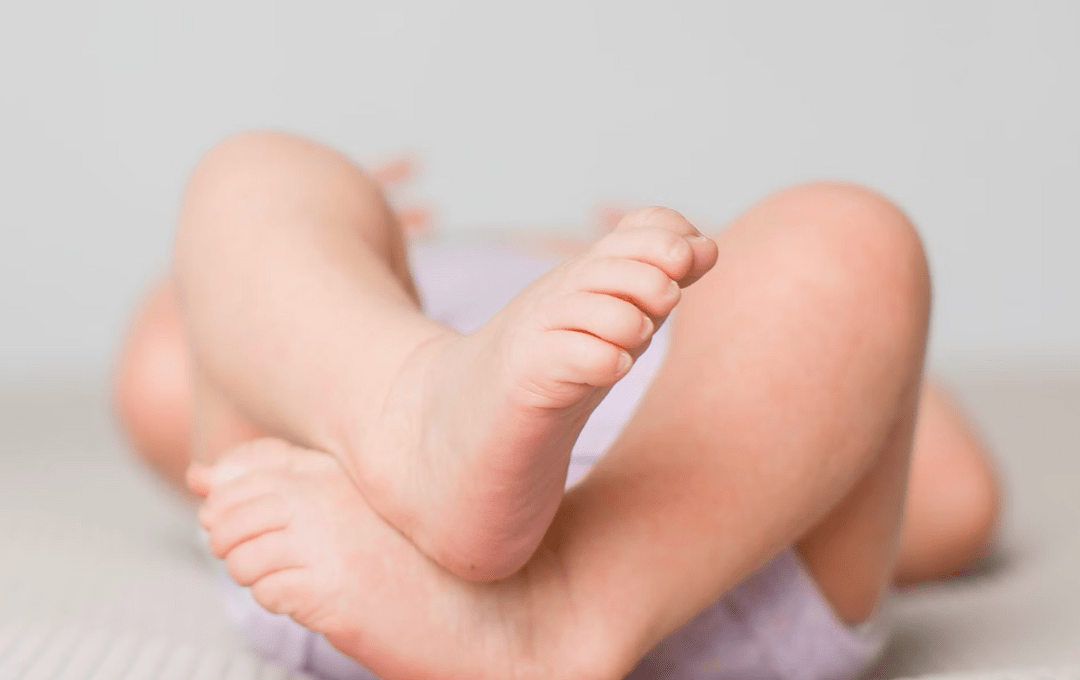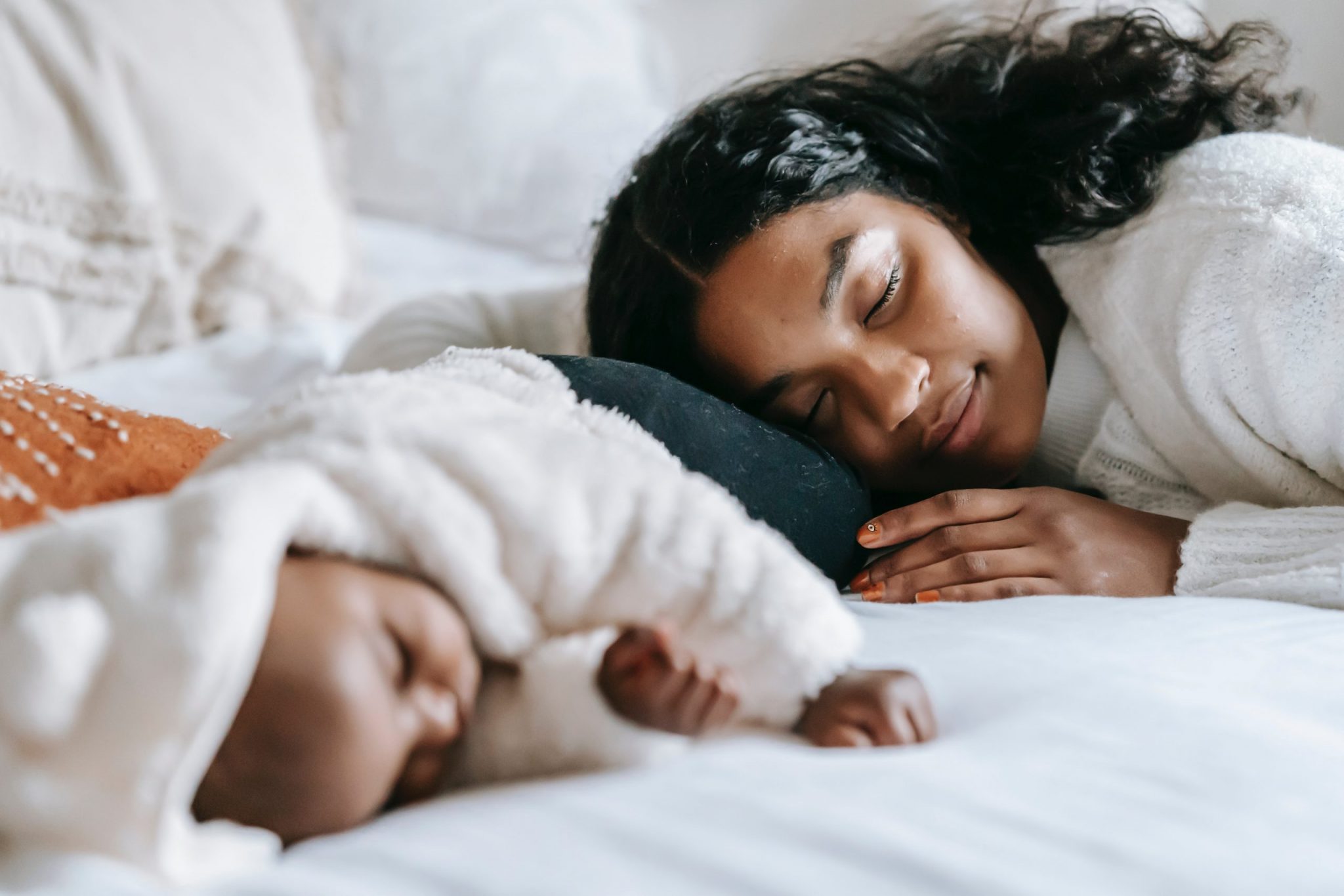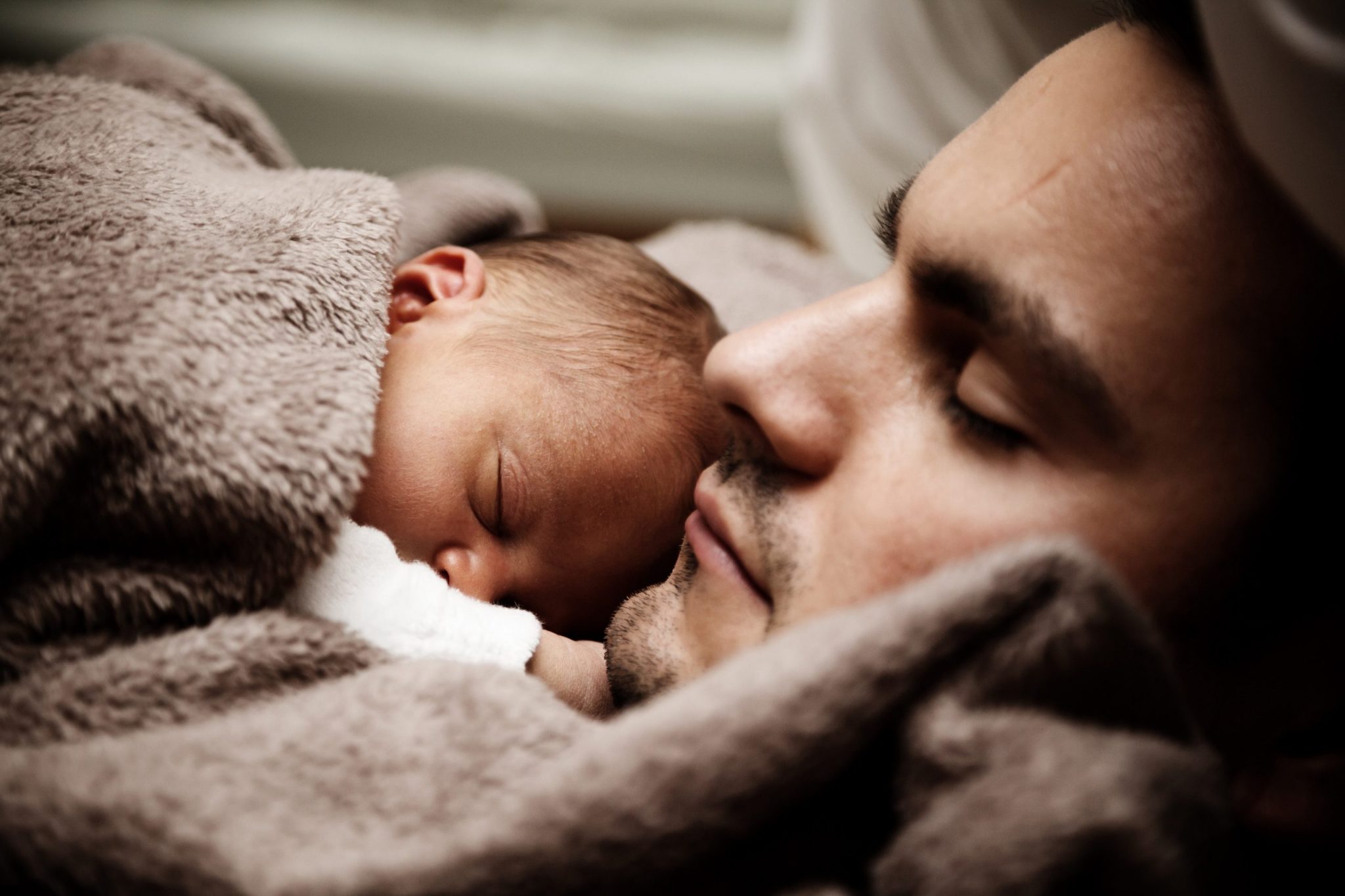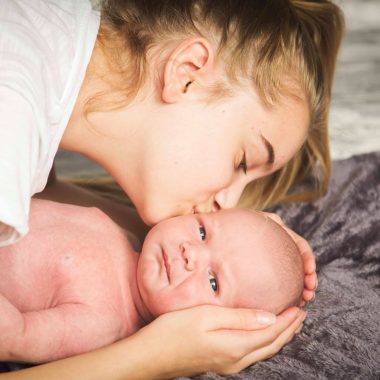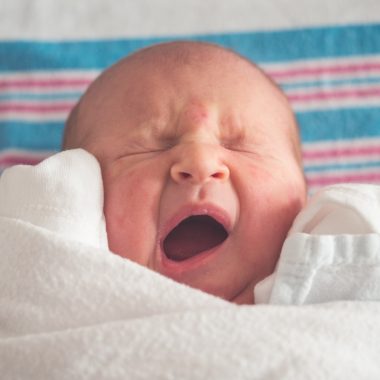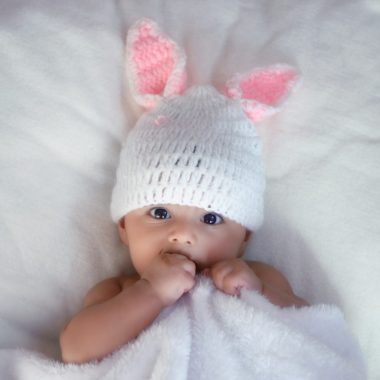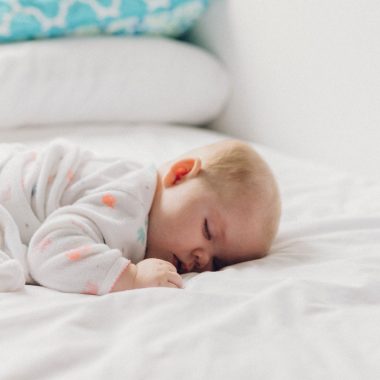Safe sleep practices aren’t just another parenting trend; they can be lifesaving. According to the Centers for Disease Control and Prevention (CDC), over 3,000 babies in the United States die alone unexpectedly each year from sudden infant death syndrome (SIDS) and other sleep-related causes. While these statistics can sound alarming, understanding and implementing safe sleep guidelines can significantly reduce these risks and give parents peace of mind.
Today we will walk you through the best practices recommended by pediatric experts, covering everything from the optimal sleep position to creating a secure sleeping environment. As a new parent, a lot of guidelines and information can be overwhelming. But hopefully, these guidelines will help you lay a solid foundation for healthy, risk-free sleep for your new addition to the family.
Safe baby sleep might sound all “official guidelines” and “technical jargon,” but it’s actually all about creating a cozy, risk-free snooze zone for your little one all while, saving your own sanity in the process.
The Importance of Safe Sleep
Safe sleep might seem like a buzzword these days, but it’s rooted in a very real concern: keeping our little ones out of harm’s way while they snooze. Babies have delicate systems, especially when it comes to breathing and temperature regulation, and their sleeping environment plays a big role in helping them rest soundly (and safely).
Reducing Risks, One Nap at a Time
One of the biggest reasons experts emphasize safe sleep is to lower the risk of Sudden Infant Death Syndrome (SIDS). While scientists are still uncovering the exact causes, research consistently points to certain unsafe sleep practices (like tummy sleeping or a cluttered crib) as factors that can increase the likelihood of sleep-related incidents. By following proven guidelines, parents can reduce these risks significantly.
Supporting Healthy Growth and Development
Beyond reducing the risk of accidents or SIDS, a safe and comfortable sleep space supports your baby’s overall development. Quality rest fuels everything from brain growth to a strong immune system, helping babies wake up ready to conquer tummy time—or at least smile through it!
ALSO READ: Sleep Problems In Children With Special Needs
Recommended Safe Sleep Guidelines
While there is plenty of information regarding safe sleep practices, there are a few notes to always bear in mind. Once you have the basics covered, it should be smooth sailing ahead.
1. Back to Sleep
It may sound straightforward, but this is a game-changer: always place your baby on their back to sleep, whether it’s for a quick nap or the long night ahead. This position keeps their airway open and reduces the risk of suffocation. Yes, they may squirm around and end up on their side or tummy eventually, but starting them out on their back is key.
2. A Firm and Flat Surface
No snuggly pillows or cushiony couches! Pick a firm, safety-approved crib mattress or bassinet. The idea is to keep the sleeping surface firm and flat, so your little one’s head and neck stay properly supported (aka no sinking into plushy fabrics).
Your baby’s sleep surface SHOULD :
- be flat (elevated positions are unsafe)
- be firm
- be clear of all loose objects
- be separate (bed-sharing is a big no-no)
- be at least 3 feet away from furniture, windows or cords
3. Keep It Clutter-Free
If your child’s crib looks straight out of a minimalist magazine, you’re doing it right! Steer clear of pillows, stuffed animals, blankets, and crib bumpers. While they may be adorable, they can also become potential hazards. Instead, dress your baby in a breathable sleep sack or onesie if it’s chilly.
Your baby’s crib SHOULD NOT have:
- bumpers
- loose objects like blankets, pillows, toys, stuffed animals, etc.
- drop-down sides
- gaps around the edges of the mattress
Your baby’s crib SHOULD have:
- firmly-fitted sheets on the mattress
- the recommended mattress height
ALSO READ: 8 Tips to Help Your Baby Self-Soothe to Sleep
4. Room-Sharing But Not Bed-Sharing
Pop that bassinet in your room for easy nighttime check-ins and feedings, but let your baby snooze in their own separate sleep space. This arrangement helps reduce the risk of SIDS while keeping them within arm’s reach for a quick snuggle or diaper change.
Due to the risk of sudden infant death syndrome (SIDS) and accidental infant suffocation and strangulation, the American Academy of Pediatrics (AAP) does not recommend having an infant sleep in an adult bed with parents or caregivers. According to the AAP, it is recommended to share a room without sharing a bed .
5. Watch the Temperature
A nursery that feels comfortable for you is likely just right for your baby. Aim for a cooler, well-ventilated room, around 68–72°F (20–22°C). Overheating can increase SIDS risk, so if you’re sweating, your little one probably is, too.
6. Pacifiers Are A-OK
Using a pacifier during naptime or bedtime has been shown to help reduce the risk of SIDS. If your baby takes to it, let them keep it but pay attention not to force it if they’re not into it.
When choosing a pacifier:
- only use ones made for babies (no substitutes like teethers)
- never attach the pacifier to their clothing
- don’t put it in their mouth while they’re sleeping
- only use when your baby is calm and awake
Pro tip: Wait until breastfeeding is well-established (usually around 3–4 weeks) before introducing a pacifier, if that’s your feeding method.
7. Consistency is Key
Babies thrive on routine. A consistent bedtime and nap schedule can help their internal clock settle into a healthy rhythm. Pair that with the same safe sleep practices every time and you’ll set the stage for safer, sounder snoozing.
ALSO READ: Is It Okay To Let My Baby Cry It Out?
How to Set Up a Safe Sleep Environment
There are several ways to ensure that your baby’s sleep environment is safe and ideal for sleep. Some of the important points to remember include:
Ideal Room Temperature
Think of the nursery like the perfect Goldilocks zone: not too hot, not too cold . Generally, 68–72°F (20–22°C) is the sweet spot. If the room feels stuffy or you find yourself sweating, chances are your baby could be overheating, which may increase the risk of SIDS. On the flip side, if you’re chilly in a light sweater, your baby might need a little more warmth.
Your baby’s room should be:
- at a cool temperature of 68–72°F (20–22°C)
- well-ventilated with fresh air
- smoke-free
Babywear
Choosing the right pajamas can be the difference between a comfortable night’s sleep and a restless one. The ideal sleepwear for your little one is light, breathable cotton sleepwear or a warm-but-not-too-heavy sleep sack depending on the weather. Over-bundling can lead to overheating, so a good rule of thumb is to dress your baby in one layer more than you’d wear to bed yourself.
Your baby’s sleepwear should be:
- loose-fitting and snug at the wrist and ankles
- free of strings or ribbons
- made of breathable, light fabric
ALSO READ: How To Create A Safe Sleep Environment For Your Baby
Sound and Lighting
Getting the sound and lighting right can be challenging for new parents. A good rule of thumb is to opt for dark curtains (if the room allows a lot of light in) and a quiet room at the back of the house.
- White Noise : A soft hum or gentle white noise machine can help soothe your baby to sleep by masking sudden sounds (like clanging dishes or a barking dog). Just make sure the volume stays at a safe decibel level (usually under 50 dB).
- Dim Lighting : Keep the lights low or use soft nightlights to avoid overstimulation. It’s also helpful for late-night feedings but not so much that your little one thinks it’s playtime.
The Invidyo Baby Cam comes with in-built lullabies and white noise to help your little one drift to sleep. It also allows you to talk to your baby to soothe them if they wake up with the excellent two-way communication feature.
Crib Placement
Position the crib or bassinet in a spot with good ventilation and away from potential hazards like windows, blinds, or dangling cords. You must make sure that the crib meets current safety standards, including safe spacing between slats and a stable frame. It may be tempting to hang decorative mobiles within arm’s reach, but keep them safely out of your baby’s range until they’re older.
Keep It Tidy
While a design-magazine-worthy nursery can look amazing on Instagram, less is more when it comes to actual sleeping surfaces. This means no loose blankets, toys, or pillows. If you’re worried about your baby getting cold, a breathable swaddle or wearable blanket is both snug and safe.
If you’re considering swaddling, then make sure your swaddle is:
- snug around the chest
- secure
- loose around the hips
Check for Recalls and Standards
Before you say “yes!” to that adorable secondhand crib or vintage bassinet, double-check that it hasn’t been recalled and that it still meets current safety regulations. Over time, guidelines shift as new research emerges, so a quick online check can make all the difference.
ALSO READ; 10 Tips to Cope With Sleep Deprivation As A New Mom
Common Myths & Misconceptions About Baby Sleep
Let’s dive into some common myths and misconceptions regarding baby sleep. Don’t get caught up with all the false information around. Let’s talk facts!
Myth 1: “Babies Sleep Best on Their Tummies”
The facts: This may have been common advice years ago, but placing babies on their back is widely recognized as the safest position for sleep. While some parents worry about “flat head” syndrome, tummy time takes care of that alongside strengthening neck muscles. The benefits of back sleep far outweigh any other position and drastically reduce SIDS risk.
Myth 2: “Crib Bumpers Keep My Baby Safe”
The facts: Crib bumpers and similar soft items may seem like they’d protect a baby from hard crib rails, but they actually pose a suffocation and entanglement risk. A bare crib with just a fitted sheet over a firm mattress is far safer.
Myth 3: “Bed-Sharing Helps Prevent Night Wakings”
The facts: It’s true that having your baby close by can make nursing or soothing quicker, but room-sharing is safer than bed-sharing. Infants can get trapped in bedding or accidentally rolled on, especially when parents are deep in sleep.
Myth 4: “Swaddling Is Always Safe”
The facts: Swaddling can be soothing, especially in the early newborn phase, but it must be done correctly and discontinued once babies start rolling over. An incorrectly wrapped swaddle can be too tight around the hips or come loose and pose a suffocation hazard. Always follow safe swaddling guidelines, and switch to a sleep sack once your baby starts showing signs of rolling.
Myth 5: “A Warm Room = Better Sleep”
The facts: Overheating is actually a known risk factor for SIDS. A slightly cooler sleep environment (around 68–72°F or 20–22°C) is safer and often more comfortable. If you’re unsure, check your baby’s chest or back to see if they’re too hot or cold; hands and feet can sometimes feel cooler and aren’t always a good indicator.
Baby Monitoring for Added Baby Sleep Safety
Baby monitors video, sound, and even movement detection offer peace of mind, especially during those middle-of-the-night check-ins. They are also particularly helpful during the sleep training phase.
ALSO READ: Sleep Training Methods: What is the Best One for My Baby?
A reliable monitor helps you check-in on your baby at all times without worrying about disturbing their slumber. Select few monitors also include temperature sensors to help you ensure your baby’s sleep environment is ideal for safe sleep.
Besides, with the right monitor you are also equipped with features such as white noise, lullabies and two-way communication to constantly stay in touch with your baby regardless of where you are.
The Invidyo Baby Cam offers all of the above alongside breakthrough AI technology that offers new parents automated sleep tracking, cough & cry analysis and daily summaries of your baby’s activities. The convenient app allows multi-user support and a slew of important features that every parent needs to look after their little one.
Safe Sleep FAQs For Every New Parent
Q1: “When can my baby sleep with a blanket?”
A: Generally, it’s recommended to wait until your child is at least 12 months old before introducing a light blanket.
Q2: “What if my baby rolls onto their stomach during the night?”
A: The key is to always place them on their back when putting them down. If they roll over on their own, it’s usually safe to let them be.
Q3: “Why can’t I just share the bed with my baby for convenience?”
A: While bed-sharing feels easier for nighttime feedings, it increases the risk of suffocation and entrapment.
Q4: “Is it okay to let my baby sleep in a car seat or swing?”
A: Car seats and swings are designed for short-term use and shouldn’t replace a safe, flat crib for regular sleep. If your baby dozes off in the car seat, transfer them to their crib as soon as it’s feasible.
Q5: “How do I keep my baby from overheating?”
A: Keep the nursery at about 68–72°F (20–22°C) and dress your baby in light layers.
Q6: “Can I use a pillow for head support?”
A: Babies do not need pillows; in fact, pillows can pose a suffocation risk.
Q7: “Should I wake my baby for feeding at night?”
A: Some babies, especially newborns or those with certain medical needs, might need regular feedings even at night. Others can safely sleep longer stretches. It depends on your baby’s age, weight, and health. Consult with your pediatrician for the best advice.
Q8: “How long should my baby sleep in the same room?”
A: Many experts recommend room-sharing for at least the first 6 months. This approach makes nighttime feedings easier and can significantly reduce SIDS risk.
Safe sleep isn’t just about following rules—it’s about giving our little ones the best possible start. Each step and precaution adds up to more peaceful nights and healthier days for your baby (and you!). While technology does lend a helping hand, it’s the attentive, everyday practices that truly make the difference.
Remember: Babies grow and change faster than we can blink, so stay flexible. If something isn’t working or feels off, trust your instincts and don’t hesitate to consult with a pediatrician. Safe sleep guidelines are there to reduce risks, not to box you in. By staying informed and adapting as your child develops, you’ll create a sleeping environment that’s not just safe, but also welcoming and cozy.
Above all, give yourself credit—you’re doing an incredible job navigating one of the most challenging (and rewarding!) parts of parenthood.


